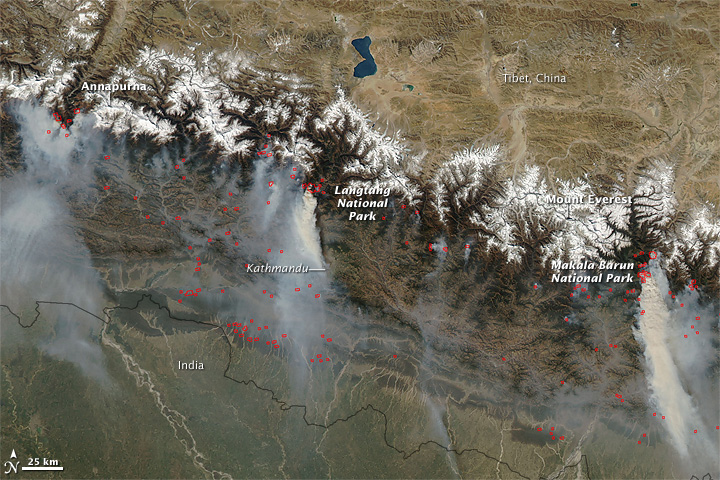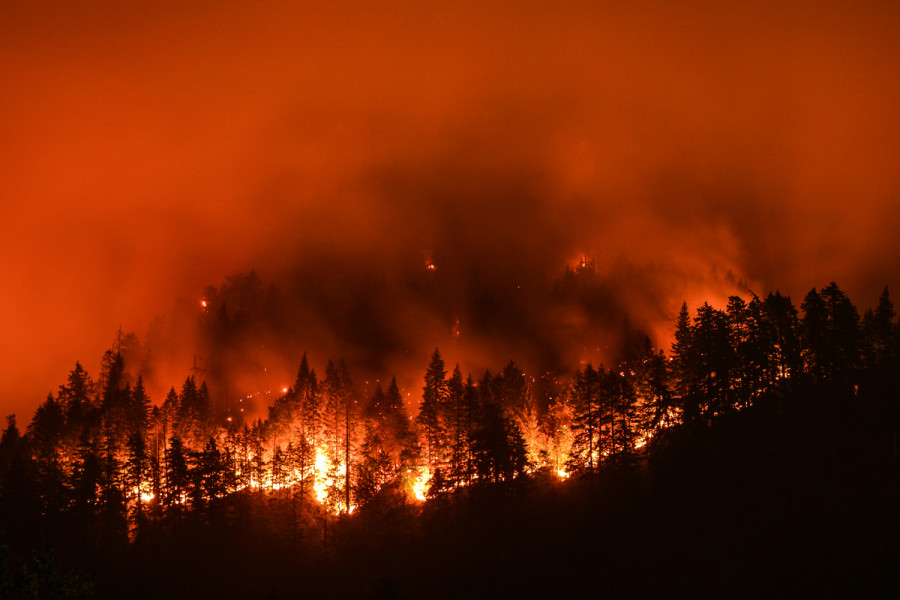“Protecting Nepal’s Forests: Why Minimizing Forest Fires is Crucial for Biodiversity and Climate Change”
Nepal is a beautiful country that boasts a diverse range of ecosystems, including forests, grasslands, and wetlands. However, these ecosystems are under threat from the devastating effects of wildfires, which can cause massive destruction to habitats, wildlife, and human settlements. In this article, we’ll explore why it’s crucial to minimize forest fires in Nepal and what we can do to prevent and control them.
Nepal is home to a wide range of plant and animal species, many of which are unique to the country. These ecosystems also play an essential role in providing clean air and water, supporting agriculture and forestry, and providing livelihoods for local communities. Unfortunately, wildfires can destroy these resources and threaten the well-being of communities.

Image from: NASA Earth
There are several reasons why it’s essential to minimize forest fires in Nepal. Firstly, wildfires can lead to the loss of biodiversity and the destruction of habitats. Many species of plants and animals are dependent on specific ecosystems, and when those ecosystems are destroyed, these species can be pushed toward extinction. This loss of biodiversity can have far-reaching consequences for ecosystems and the services they provide.
Secondly, wildfires can contribute to climate change by releasing carbon dioxide and other greenhouse gases into the atmosphere. These gases trap heat and contribute to global warming, which can have severe consequences for the planet, including more frequent and severe natural disasters and rising sea levels.
Finally, wildfires can have devastating impacts on human settlements, including damage to homes and infrastructure, loss of livelihoods, and health problems from exposure to smoke and ash. These effects can be particularly severe in Nepal, where people may have limited access to resources and infrastructure to cope with these disasters.

So, what can we do to prevent and control forest fires in Nepal? Firstly, it’s crucial to enforce regulations on land use and promote sustainable land management practices such as controlled burns and forest thinning. These practices can help reduce the risk of wildfires and maintain healthy ecosystems. Additionally, raising awareness among communities about fire safety and prevention and investing in technology and equipment for early detection and suppression can also help.
In conclusion, forest fires are a significant threat to ecosystems, biodiversity, and human settlements in Nepal. We must take action to prevent and control them, protect our forests and wildlife, and reduce our impact on the planet. By working together, we can create a sustainable future where wildfires are minimized, and our natural resources are protected for generations to come.
Visit https://mahavirshree.com/solutions/ to know the modern technical solutions for your problems.
